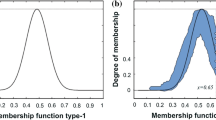Abstract
Driving behavior normalization is important for a fair evaluation of the driving style. The longitudinal control of a vehicle is investigated in this study. The normalization task can be considered as mapping of the driving behavior in a different environment to the uniform condition. Unlike the model-based approach as in previous work, where a necessary driver model is employed to conduct the driving cycle test, the approach we propose directly normalizes the driving behavior using an auto-encoder (AE) when following a standard speed profile. To ensure a positive correlation between the vehicle speed and driving behavior, a gate constraint is imposed in between the encoder and decoder to form a gated AE (gAE). This approach is model-free and efficient. The proposed approach is tested for consistency with the model-based approach and for its applications to quantitative evaluation of the driving behavior and fuel consumption analysis. Simulations are conducted to verify the effectiveness of the proposed scheme.
摘要
在评估驾驶风格时, 对驾驶行为的标准化至关重要. 本文对车辆的纵向控制进行了研究. 通过归一化任务将不同环境中的驾驶行为映射到统一条件下. 前人工作采用必要的驾驶员模型进行驾驶循环测试; 与这种基于模型的方法不同, 我们提出的方法在遵循标准速度曲线时使用自动编码器直接对驾驶行为进行标准化. 为确保车速和驾驶行为之间满足正相关约束条件, 在编码器和解码器之间设计了门控函数. 所提方法无需模型且高效. 测试结果验证了该方法与已有方法的一致性. 同时, 测试了其在驾驶行为和燃料消耗分析的定量评估中的应用. 仿真结果验证了所提方法的有效性.
Similar content being viewed by others
Explore related subjects
Discover the latest articles and news from researchers in related subjects, suggested using machine learning.References
Al-Sultan S, Al-Bayatti AH, Zedan H, 2013. Context-aware driver behavior detection system in intelligent transportation systems. IEEE Trans Veh Technol, 62(9):4264–4275. https://doi.org/10.1109/TVT.2013.2263400
Baldi P, 2012. Autoencoders, unsupervised learning, and deep architectures. Proc ICML Workshop on Unsupervised and Transfer, p.37–50.
Cao WJ, Lin X, Zhang K, et al., 2017. Analysis and evaluation of driving behavior recognition based on a 3-axis accelerometer using a random forest approach. Proc 16th ACM/IEEE Int Conf on Information Processing in Sensor Networks, p.303–304. https://doi.org/10.1145/3055031.3055060
Chen J, Wu ZC, Zhang J, 2019. Driving safety risk prediction using cost-sensitive with nonnegativity-constrained autoencoders based on imbalanced naturalistic driving data. IEEE Trans Intell Transp Syst, 20(12):4450–4465. https://doi.org/10.1109/TITS.2018.2886280
Filev D, Lu JB, Prakah-Asante K, et al., 2009. Real-time driving behavior identification based on driver-in-the-loop vehicle dynamics and control. Proc IEEE Int Conf on Systems, Man and Cybernetics, p.2020–2025. https://doi.org/10.1109/ICSMC.2009.5346735
Hu DL, Zhao XH, Mu ZM, et al., 2013. Distinguish method of fatigue state based on driving behavior wavelet analysis. Proc 32nd Chinese Control Conf, p.3590–3596.
Imamura T, Yamashita H, Zhang Z, et al., 2008. A study of classification for driver conditions using driving behaviors. Proc IEEE Int Conf on Systems, Man and Cybernetics, p.1506–1511. https://doi.org/10.1109/ICSMC.2008.4811499
Kaplan S, Guvensan MA, Yavuz AG, et al., 2015. Driver behavior analysis for safe driving: a survey. IEEE Trans Intell Transp Syst, 16(6):3017–3032. https://doi.org/10.1109/TITS.2015.2462084
Krizhevsky A, Sutskever I, Hinton GE, 2012. ImageNet classification with deep convolutional neural networks. Proc 25th Int Conf on Neural Information Processing Systems, p.1097–1105. https://doi.org/10.5555/2999134.2999257
Plöchl M, Edelmann J, 2007. Driver models in automobile dynamics application. Veh Syst Dynam, 45(7–8):699–741. https://doi.org/10.1080/00423110701432482
Ranney TA, 1994. Models of driving behavior: a review of their evolution. Accid Anal Prev, 26(6):733–750. https://doi.org/10.1016/0001-4575(94)90051-5
Shi B, Hu J, Xu L, 2015a. Automatic transmission gear prediction based on personalised transmission gear modelling. Int J Veh Syst Modell Test, 10(4):356–365. https://doi.org/10.1504/ijvsmt.2015.073041
Shi B, Xu L, Hu J, et al., 2015b. Evaluating driving styles by normalizing driving behavior based on personalized driver modeling. IEEE Trans Syst Man Cybern Syst, 45(12):1502–1508. https://doi.org/10.1109/TSMC.2015.2417837
Song B, Delorme D, Werf JV, 2000. Cognitive and hybrid model of human driver. Proc IEEE Intelligent Vehicles Symp, p.1–6. https://doi.org/10.1109/ivs.2000.898309
TAB, 2010. China Road Traffic Accidents Statistics. Traffic Administration Bureau of the Ministry of Public Security of the People’s Republic of China (in Chinese).
Tschannen M, Bachem O, Lucic M, 2018. Recent advances in autoencoder-based representation learning. https://arxiv.org/abs/1812.05069
Wang WS, Han W, Na XX, et al., 2020. A probabilistic approach to measuring driving behavior similarity with driving primitives. IEEE Trans Intell Veh, 5(1):127–138. https://doi.org/10.1109/TIV.2019.2955372
Wang YH, Ho IWH, 2018. Joint deep neural network modelling and statistical analysis on characterizing driving behaviors. Proc IEEE Intelligent Vehicles Symp, p.1–6. https://doi.org/10.1109/IVS.2018.8500376
Xu L, Hu J, Jiang H, et al., 2015. Establishing style-oriented driver models by imitating human driving behaviors. IEEE Trans Intell Transp Syst, 16(5):2522–2530. https://doi.org/10.1109/TITS.2015.2409870
Zhang Y, Li JJ, Guo YH, et al., 2019. Vehicle driving behavior recognition based on multi-view convolutional neural network with joint data augmentation. IEEE Trans Veh Technol, 68(5):4223–4234. https://doi.org/10.1109/tvt.2019.2903110
Zhang YL, Lin WC, Chin YKS, 2010. A pattern-recognition approach for driving skill characterization. IEEE Trans Intell Transp Syst, 11(4):905–916. https://doi.org/10.1109/TITS.2010.2055239
Acknowledgements
We would like to thank engineer Kai XU for his contribution to this paper.
Author information
Authors and Affiliations
Contributions
Xin HE designed the research. Zhe ZHANG and Jiapei YU processed the data. Xin HE and Li XU drafted the paper. Zhe ZHANG helped organize the paper. Xin HE and Li XU revised and finalized the paper.
Corresponding author
Ethics declarations
Xin HE, Zhe ZHANG, Li XU, and Jiapei YU declare that they have no conflict of interest.
Additional information
Project supported by the Ford Motor Company (No. URP 2018-J077.4)
Rights and permissions
About this article
Cite this article
He, X., Zhang, Z., Xu, L. et al. Efficient normalization for quantitative evaluation of the driving behavior using a gated auto-encoder. Front Inform Technol Electron Eng 23, 452–462 (2022). https://doi.org/10.1631/FITEE.2000667
Received:
Accepted:
Published:
Issue Date:
DOI: https://doi.org/10.1631/FITEE.2000667




